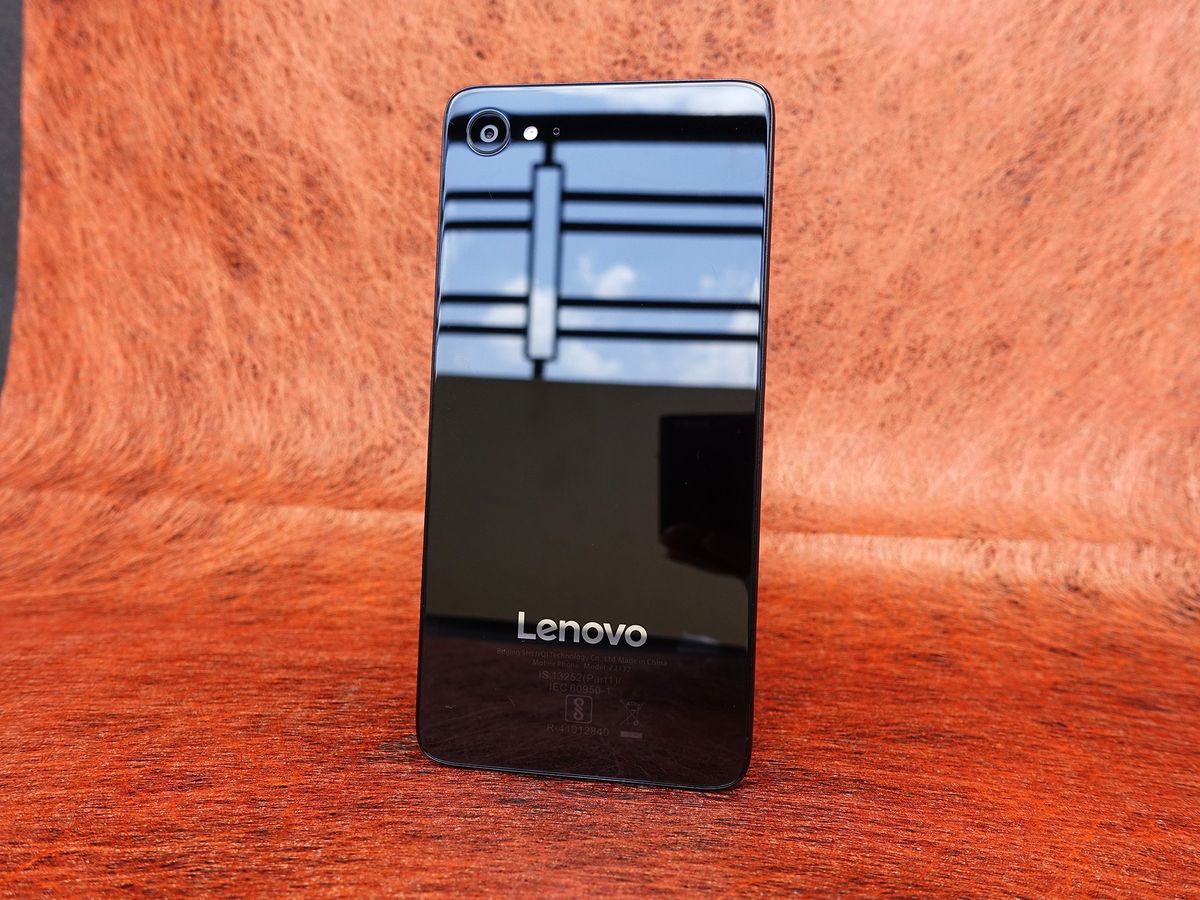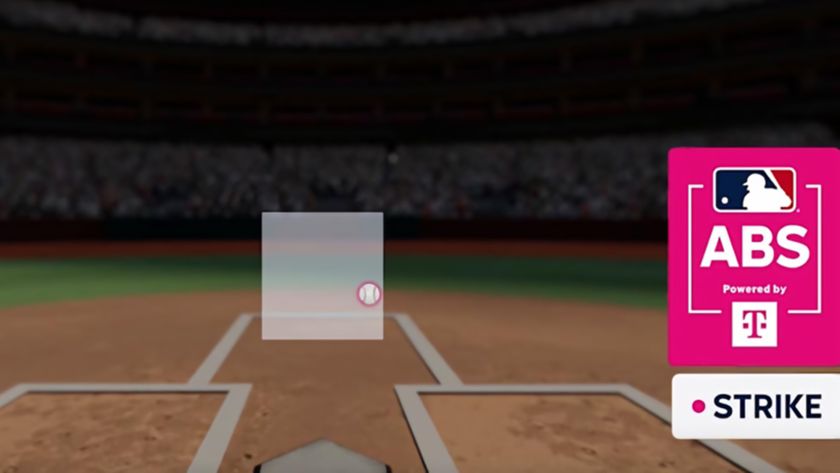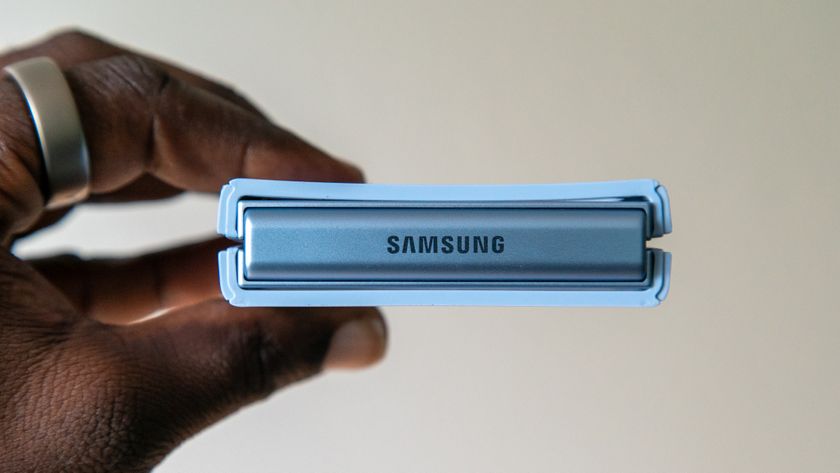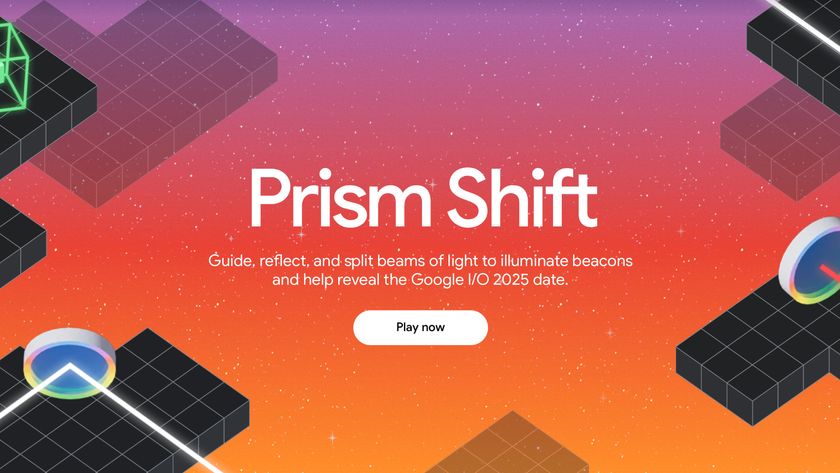Quick take:
With the Z2 Plus, Lenovo is ready to stake its claim on the mid-tier segment. Featuring a compact body, high-end internals, and a great camera, the Z2 Plus gets all the basics right. By pricing it at just ₹19,999 ($300), Lenovo is undercutting its Chinese rivals by a significant margin. Read on to find out if the phone can hold its own in this highly competitive segment.
The good
- Compact design
- Excellent performance
- Great battery life
- Unmatched value for money
The bad
- Slippery body
- Uncertainty over software updates
Time to groove
Lenovo Z2 Plus Full review
The Lenovo Z2 Plus is launching at a time when the Chinese manufacturer is looking to increase its presence in India. Lenovo witnessed a 100% increase in India last year and now accounts for 9.1% of the smartphone market share. It is now gunning for the top spot, a position long held by Samsung. Doing so requires challenging Samsung across several price points, and Lenovo is doing just that by co-opting products from its sub-brands.
Lenovo's Moto brand is fielding the Moto G4 Plus for ₹13,499 ($200) and the Moto Z Play for ₹24,999 ($375), and the manufacturer is now positioning the Z2 Plus in the lucrative ₹15,000 ($225) to ₹20,000 ($300) segment. The Z2 Plus debuted as the ZUK Z2 in China earlier this year, but Lenovo is eschewing the ZUK name for its own branding in India to market the phone to a wider audience.
By branding the Z2 as a Lenovo phone, it eliminates the need to advertise an all-new product series. Furthermore, the Z2 Plus' predecessor, the Z1, didn't fare well in the country, and the Cyanogen-powered phone is yet to receive the Marshmallow update. Along with aligning the Z2 Plus into Lenovo's own brand name, the manufacturer has ditched Cyanogen in favor of its in-house ZUI, the same ROM that is used in the Chinese version of the phone.
In broad strokes, we're looking at a 5.0-inch Full HD display, 2.15GHz Snapdragon 820 SoC, 4GB of RAM, 64GB storage, and a 3500mAh battery for ₹19,999 ($300). Lenovo is also selling a base model of the Z2 Plus with 3GB of RAM and 32GB storage for ₹17,999 ($270). We've already seen several mid-range phones with the Snapdragon 820 in India — notably the Mi 5, Le Max 2, and the OnePlus 3. The Z2 Plus is the most affordable phone yet to offer Qualcomm's high-end SoC.
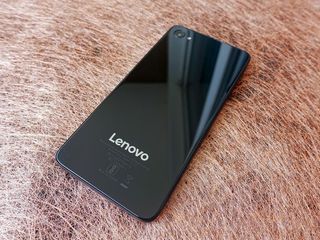
Everything's here
Lenovo Z2 Plus Specs
| Category | Features |
|---|---|
| Operating System | ZUI 2.0.111 based on Android 6.0.1 Marshmallow |
| Display | 5-inch 1080p (1920 x 1080) IPS LCD panel441ppi pixel density |
| SoC | Quad-core Qualcomm Snapdragon 820Two Kryo cores at 2.15GHz, two Kryo cores at 1.6GHz14nm |
| GPU | Adreno 530 at 624 MHz |
| RAM | 4GB RAM |
| Storage | 64GB storage |
| Rear camera | 13MP ISOCELL with f/2.2 lensLED flash4K video recording, slo-mo video (720p at 120fps) |
| Front shooter | 8MP with f/2.0 lens1080p video recording |
| Connectivity | WiFi ac, Bluetooth 4.1 (A2DP), GPS, GLONASSUSB-C, 3.5mm audio jack |
| Battery | 3500mAh batteryQuick Charge 3.0 |
| Fingerprint | Front fingerprint sensor |
| Dimensions | 141.7 x 68.9 x 8.5mm |
| Weight | 149g |
| Colors | Titanium Black, Ceramic White |
About this review
I (Harish Jonnalagadda) am writing this review after using the Lenovo Z2 Plus as my daily driver for seven days in Hyderabad, India on Airtel's 4G network. Out of the box, the phone ran ZUI 2.0.11, and then received an update to ZUK 2.0.111 that fixed several camera-related issues. I paired the phone with an LG Watch Urbane for the duration of the review.
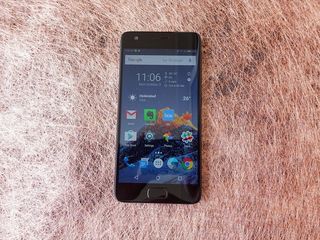
Hey there chunky
Lenovo Z2 Plus Design and screen
It's nice. It's thick. It feels great to hold in your hand. Fine, I'll stop. The Z2 Plus breaks away from tradition when it comes to the design. Instead of a svelte profile with 2.5D glass, Lenovo went with a chunkier design with slightly rounded edges and chamfers around the frame. As a result, the phone ends up looking like an enlarged iPhone 5s. That's not a bad thing necessarily, but the design will not be to everyone's tastes. I like it because it feels substantial to hold and has a great in-hand feel. Round the back, you get a glossy glass back that's highly reflective, and a Lenovo logo etched at the bottom. As you'd expect, the glass surface is highly slippery and prone to smudges.
The phone's design also features a roll cage wherein all the key internal components are mounted on a metal frame for added resistance to tumbles. Similarly, the outer frame is made out of fiberglass, which reinforces the structural integrity of the handset. Going with a fiberglass design also allowed Lenovo to integrate the antenna lines into the frame of the device, eliminating the need for antenna bands at the back. Given the design tweaks, the Z2 Plus comes in at a thickness of 8.49mm. However, Lenovo's decision to use a fiberglass frame and a glass back has led to the phone weighing 149g, which gives the phone a reassuring heft while not making it seem too heavy at the same time.





The power and volume buttons are on the right, and they offer decent tactile feedback. The USB-C port is at the bottom, and yes, there's a 3.5mm headphone jack right next to it. The speaker grille is also located at the bottom, but the sound quality from the single speaker isn't great. The SIM card tray takes in two nano SIM cards, and there's no provision to extend storage via a microSD card.
In recent years, we've seen the industry settle in on 5.5 inches as the standard screen size for phones. While the increased screen size has led to more real estate for multimedia and features like multi-window mode, those looking for a compact phone with high-end internals have been under-served. Sony is one of the few companies making great compact versions of its phones without compromising on the specs, and Google has entered the fray with the 5.0-inch Pixel. However, Sony's offerings are squarely aimed at the high-end segment, and the Pixel is similarly out of reach of most buyers at ₹57,000 ($855) in India.
The Z2 Plus is a great option if you want a compact phone.
This is where Lenovo scores a win: with the Z2 Plus, it is offering a phone with high-end internals and a 5.0-inch display for just ₹19,999, making it a very enticing option for those in the market for a compact premium handset that doesn't break the bank. Lenovo is also throwing in a case and a screen protector in the box. If you're like me and don't like using these, they're easy to remove.
With a screen size of 5.0 inches, the Z2 Plus is designed for one-handed use. The Full HD LCD display has a pixel density of 441ppi and is protected by Gorilla Glass 3. The display is sharp and detailed, with text and images looking crisp. Sunlight readability is good, but in several instances, the ambient light sensor failed to reduce the brightness in low-light conditions.
Colors are rich and accurate, and you can adjust the color temperature by heading into the Settings. The default setting is standard, and you can select either warmer or colder colors based on your preference. There's also a Night Mode that adds a blue light filter to the screen, making it easier to read text at night.
The home button on the Z2 Plus is radical.
While the Z2 Plus looks great to hold and use, the glass back and blockish design makes it difficult to pick the phone up when laid flat on a surface. Also, did I mention it was very slippery? In the week I've used it, the phone tumbled out of my hand twice and landed hard on a marble floor. Thankfully, it came out undamaged both times.
The front of the Z2 Plus has a physical home button that houses a fingerprint sensor. While the placement is standard, the button does so much more.
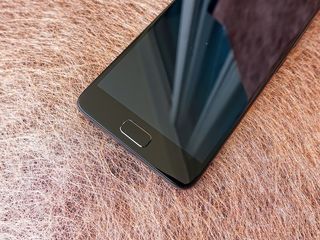
U-Touch 2.0
The fingerprint sensor on the Z2 Plus works even when the screen is off, and the button itself has picked up new tricks. The button — called U-Touch — can be used to go back to the home screen, but it also supports gestures. By default, swiping across the button brings up your previous apps, making it easy to switch from one app to another without resorting to the navigation keys. Double-pressing the button shows the multitasking pane.
You can also configure the button for various actions from within Settings. Want to open Google Now with a long touch action? You can do that. On-screen navigation buttons are enabled out of the box, and Lenovo says that it takes about three days to start using U-Touch navigation.
That's what I found in my usage as well. After four days with the phone, I was swiping left or right on the home button to access previous apps, and using the long press function to launch Evernote. You can also set an action through which you can pull down the notification shade by pressing the home button.
Lenovo took the standard home button and turbocharged it.
Lenovo says that it added home button customizations to boost one-handed usage. And it works. You can use the home button as an all-in-one replacement for the standard navigation keys. It is one of the best features of the phone, and once you get used to navigating with U-Touch, you'll regret going back to a boring home button that serves a single purpose.
The fingerprint sensor on the Z2 Plus is great too. You can store up to five fingerprints, and it is quick to authenticate. The sensor also has a self-learning algorithm that gets better over time, allowing you to use the sensor even when your fingers are wet or oily.
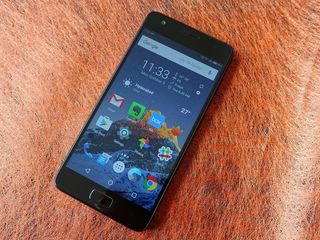
Gets the job done
Lenovo Z2 Plus Hardware
The Z2 Plus comes with a fully-enabled 14nm Snapdragon 820 SoC with a 64-bit quad-core Kryo CPU with two cores clocked at 2.15GHz and the other two at 1.6GHz. We're seeing the Snapdragon 821 make its way onto handsets with the ZenFone 3 Deluxe and the Pixel, but the Snapdragon 820 continues to be an excellent application processor for the high-end segment. The fact that the SoC is available in a phone that costs ₹19,999 is a bonus.
As we've seen on the Xiaomi Mi 5, LeEco's Le Max 2, and the OnePlus 3, the Snapdragon 820 runs without any issues, and in daily usage, you're not going to notice any lag. That's no different on the Z2 Plus. I'm using the variant with 4GB of RAM and 64GB storage, and seeing as how there's no expandable storage on the phone; it makes a lot of sense to pay the extra ₹2,000 and get the higher storage model.
The phone also offers a 13MP ISOCELL camera that shoots 4K video, 8MP front camera, LTE on all three bands in India (3/5/40), Wi-Fi ac, Bluetooth 4.1, USB-C, and a 3500mAh battery. Lenovo has also bundled Ant+ sensors into the handset, which provide accurate step tracking and are used in conjunction with the U-Health app.
Regarding real-world performance, the phone handled everything I threw at it with aplomb. I never found the phone to be sluggish or laggy even when I had multiple apps running in the background. In this price segment, it's hard to find a phone that outclasses the Z2 Plus.
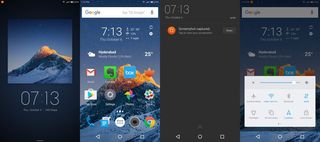
Not another Chinese ROM
Lenovo Z2 Plus Software
The Z2 Plus runs ZUI 2.0.111 based on Android Marshmallow, with the latest build coming with the August security patch. After Lenovo's tribulations with Cyanogen OS, which led to the Z1 being abandoned on Android 5.1.1, the company has decided to offer its in-house ZUI ROM in the Z2 Plus. In India, Lenovo is offering the Google Now Launcher as standard, which is a good thing. There are a few customizations that alter the look and feel of the UI, starting with the notification panel.
ZUI's notification panel doesn't have quick toggles, and the pane itself is basic and used for just showing notifications. You don't get the ability to expand notifications or use Android's inline replies. There is an option to block all notifications from an app with a swipe left gesture. If you have Jabong or Myntra installed, you'll find this particular feature handy.
ZUI offers a dedicated pane for quick toggles, which is accessible through a swipe up gesture from the bottom of the screen. Lenovo says that it unbundled the toggles from the notification shade and moved them to the bottom of the screen as a way of providing easy access to the settings when using the phone one-handed. Dubbed the Quick Switch panel, the window features frequently used toggles spread over two pages, and a brightness slider up top. You can arrange the toggles based on your preference, and activate the quick shortcut window to be accessible when you're within an app or from the lock screen.
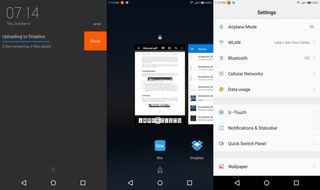
The multitasking pane is also severely tweaked and doesn't use a card-based layout. What you get is a scrolling list of apps with a preview. You can prevent apps from getting cleared by locking them in the background with a swipe down gesture, which activates a lock symbol on the particular app.
It takes a while to get used to ZUI, but it's worth the effort.
That's where the customizations end. The home screen itself is standard fare in large part due to the Google Now Launcher, with the left-most home screen is dedicated to Google Now. You can easily add widgets by long pressing anywhere on the home screen. The Settings app offers a wealth of customization options, and the About section details ZUK's customer service number (if you need it, it's 1800-3000-7678). If you want to set a custom ringtone, you can do so directly from the Settings, eliminating the need for a dedicated ringtone maker.
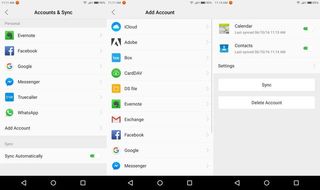
Another interesting addition in the Z2 Plus is the ability to sync your iCloud account. Just sign in to your Apple account, and you'll be able to sync your contacts and calendar events. Out of the box, the Z2 Plus has several pre-installed apps, including 9Apps, Hasoffer, Hotoday, and Superb Cleaner. Thankfully, you can (and should) uninstall these apps. Lenovo's own ShareIt is also bundled.
ZUI lets you easily enable the battery percentage without having to mess with System UI Tuner. Then there's the U Health app, which is essentially a customized version of Google Fit. The app pulls data from all the on-board sensors, tracking your daily activity. You can manually add activities, like running, yoga, or swimming, and there's also the option of seeing your activity spread out over the course of the week, as well as the amount of time you're active.
Lenovo hasn't detailed Android 7.0 Nougat update plans yet, but with the company handling software updates directly, it shouldn't take too long.
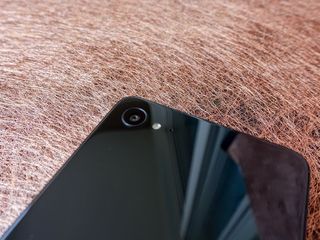
ISOCELL FTW
Lenovo Z2 Plus Camera
The Z2 Plus has a 13MP ISOCELL rear camera that can shoot 4K videos, and an 8MP shooter at the front with 1080p video recording. Out of the box, the camera crashed constantly and was unusable, but Lenovo rolled out an update that fixed things (and introduced a new camera icon).
The default gallery app is Photos, but the camera app isn't the stock Google Camera (thankfully). Lenovo's camera app has quick shortcuts for toggling the front and rear cameras, select between still images or video, accessing the gallery, enabling HDR, and flash. You get panorama, time-lapse, and slow-motion video shooting modes. Slow-motion video is shot in 720p at 120fps, 240fps, and 960fps, although the latter two modes involve a lot of post-processing and are generally not worth the effort.









The camera takes great images in bright conditions, with accurate color reproduction and a lot of detail. Images shot at night are passable, which is more than what most phones in this segment manage. The front camera is equally good at taking selfies, and the little video I recorded on the Z2 Plus turned out great. Overall, a very serviceable camera.
By default, the camera shoots in 4:3, but you can switch to 16:9 from the settings. Oddly enough, the camera settings are bundled in the phone's Settings app, and clicking on the settings shortcut in the camera app takes you to the sub-category within the Settings app where the camera options exist.
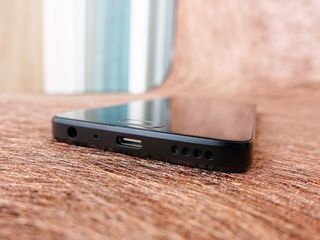
Powering through
Lenovo Z2 Plus Battery
The Z2 Plus comes with a 3500mAh battery with Quick Charge 3.0. The phone uses USB-C for charging, as is becoming more and more common in the mid-range segment.
The phone lasted a full day every single time, even when I was entirely using cellular data throughout the day. If you use the phone moderately, you can easily eke out two days worth of battery life from a full charge.
There's also the option of enabling a battery-saving mode when the charge goes below 20%, 15%, 10%, or 5%. Toggling the batter-saving mode dims the screen and switches off Wi-Fi and cellular connectivity when the screen is off. You can also prevent specific apps from running in the background.
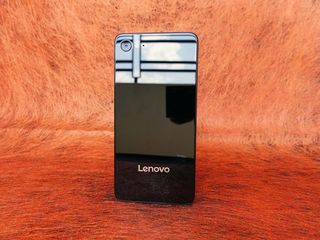
Everything is awesome
Lenovo Z2 Plus Bottom line
Lenovo has aggressively priced the Z2 Plus to lure customers away from more costly options. The lucrative price combined with a premium design, smooth performance, great camera, and all-day battery life work in Lenovo's favor, making the Z2 Plus one of the best phones in this category. The phone also solidifies Lenovo's position in the mid-range segment.
The 5.0-inch form factor makes it easy to use the phone one-handed, and Lenovo's U-Touch navigation is exemplary. Overall, the Z2 Plus offers flagship-level performance at a price that is just ₹6,500 ($100) more than the Moto G4 Plus. This is the bargain of the year.
Without a doubt
Should you buy it? Absolutely!
At launch, Lenovo was quick to point out that the Z2 Plus is the most affordable phone with the Snapdragon 820. Since then, LeEco has slashed the price of the base model of the Le Max 2 to ₹17,999 ($270) as part of a sale, but as of now, the Z2 Plus remains the best option if you're looking to get your hands on the Snapdragon 820 for under ₹20,000 ($300).
The OnePlus 3 offers 6GB of RAM, but it costs ₹8,000 ($120) more at ₹27,999 ($420). The Mi 5 has seen a price cut recently, but it is still ₹3,000 ($45) more than the Z2 Plus at ₹22,999 ($345).
It's not often we come across a brand that manages to significantly undercut Xiaomi, but with the Z2 Plus, Lenovo has done just that. The phone's aggressive pricing combined with general availability via an open sale on Amazon makes it a no-brainer. If you're in the market for a handset that offers the best value for money for under ₹20,000, look no further.

Harish Jonnalagadda is Android Central's Senior Editor of Asia. In his current role, he oversees the site's coverage of Chinese phone brands, networking products, and AV gear. He has been testing phones for over a decade, and has extensive experience in mobile hardware and the global semiconductor industry. Contact him on Twitter at @chunkynerd.
